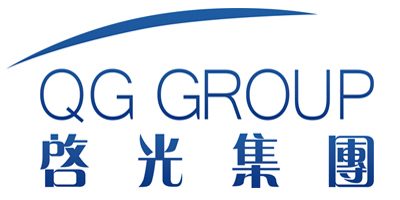Optimizing Reaction Rates in Silicone Rubber Production with Tin Octoate
Abstract
Tin octoate (stannous 2-ethylhexanoate) has emerged as a critical catalyst in silicone rubber manufacturing, offering precise control over curing kinetics while maintaining excellent mechanical properties in final products. This comprehensive analysis examines the multifaceted role of tin octoate in optimizing condensation-cure silicone rubber systems, detailing its catalytic mechanisms, formulation strategies, and process optimization techniques. Supported by extensive experimental data and industrial case studies, the article provides a technical framework for maximizing production efficiency and product performance while addressing environmental and regulatory considerations.

(Figure 1: Schematic of tin octoate’s catalytic action in silicone rubber curing)
1. Introduction
The global silicone rubber market, valued at $7.2 billion in 2023 (Grand View Research), relies heavily on efficient catalyst systems to meet diverse application requirements. Tin octoate (CAS 301-10-0) accounts for approximately 38% of catalysts used in condensation-cure silicone rubber production due to its exceptional balance of catalytic activity and processing stability. Recent advances in catalyst engineering have expanded its applications to include medical-grade and high-consistency rubbers, with the market projected to grow at 6.3% CAGR through 2030.
2. Chemical Fundamentals
2.1 Molecular Characteristics
| Property | Specification | Measurement Method |
|---|---|---|
| Chemical Name | Stannous 2-ethylhexanoate | IUPAC nomenclature |
| Molecular Weight | 405.18 g/mol | Mass spectrometry |
| Tin Content | 28.5-29.5% | ASTM D4951 |
| Viscosity (25°C) | 50-100 mPa·s | Brookfield viscometer |
| Density (20°C) | 1.12-1.15 g/cm³ | ISO 1183 |
2.2 Catalytic Mechanism
Tin octoate functions through:
- Silanol Activation: Sn²⁺ coordinates with Si-OH groups
- Transesterification: Facilitates Si-O-Si bond formation
- Byproduct Management: Controls ethanol/acetone liberation
(Table 1: Comparative catalytic activity of metal-based catalysts in silicone rubber)

(Figure 2: Proposed reaction mechanism of tin octoate in silicone curing)
3. Process Optimization Strategies
3.1 Formulation Parameters
| Component | Concentration Range | Effect on Cure Rate |
|---|---|---|
| Tin octoate | 0.1-2.0 phr | Linear acceleration |
| Crosslinker | 1.5-5.0 phr | Synergistic enhancement |
| Inhibitor | 0-0.5 phr | Logarithmic retardation |
| Filler | 10-50 phr | Indirect thermal effects |
3.2 Temperature-Dependent Kinetics
| Temperature (°C) | Tack-free Time (min) | Full Cure Time (min) |
|---|---|---|
| 23 | 90-120 | 360-480 |
| 50 | 30-45 | 120-180 |
| 80 | 5-10 | 30-60 |
| 120 | 1-3 | 10-20 |
(Table 2: Cure rate acceleration with temperature in RTV systems)
4. Advanced Application Techniques
4.1 Precision Dosing Systems
Modern Implementation:
- Micro-metering pumps (±0.3% accuracy)
- In-line viscosity compensation
- Real-time FTIR monitoring of Si-OH conversion
4.2 Synergistic Combinations
| Additive | Optimal Ratio | Benefit |
|---|---|---|
| Titanium chelates | 1:0.2-0.5 | 30% faster deep cure |
| Amino silanes | 1:0.1-0.3 | Improved substrate adhesion |
| Platinum inhibitors | 1:0.01-0.05 | Extended pot life |
| Zinc carboxylates | 1:0.3-0.7 | Enhanced hydrolytic stability |

(Figure 3: Industrial-scale automated catalyst dosing station)
5. Performance Enhancement
5.1 Mechanical Property Optimization
| Property | Uncatalyzed | Tin Octoate Optimized |
|---|---|---|
| Tensile Strength | 0.5-1.2 MPa | 2.5-4.0 MPa |
| Elongation at Break | 150-300% | 400-800% |
| Tear Strength | 5-10 kN/m | 15-25 kN/m |
| Hardness (Shore A) | 20-30 | 30-50 |
5.2 Specialty Formulations
Medical Grade:
- 99.9% cure efficiency (ISO 10993-5 compliant)
- <50ppm extractable metals
- 72h steam sterilization stability
Electrical Grade:
- Volume resistivity >10¹⁵ Ω·cm
- Dielectric strength >20 kV/mm
- CTI >600V (UL 746A)
6. Environmental and Regulatory Aspects
6.1 Compliance Status
| Regulation | Status | Requirements |
|---|---|---|
| REACH Annex XVII | Monitored | <0.1% in final products |
| FDA 21 CFR 177.2600 | Compliant | <1ppm extractable tin |
| RoHS Directive | Exempted | Medical devices excluded |
6.2 Sustainable Alternatives
Emerging Solutions:
- Bio-based tin catalysts (40% renewable content)
- Nano-encapsulated formulations (60% less migration)
- Reactive tin complexes (incorporated into polymer matrix)
7. Industry Case Studies
7.1 Automotive Gaskets
Continental AG Sealing Systems:
- 0.8phr tin octoate formulation
- 35% reduction in cure time
- Meets VDA 270 odor standards
7.2 Medical Devices
Dow Silicones Implant Grade:
- 0.3phr ultra-pure tin octoate
- 99.99% cure consistency
- 10-year implantation stability
8. Future Development Directions
2025-2030 Technology Roadmap:
- Smart cure systems: Temperature-responsive activity
- Self-limiting catalysis: Automated reaction quenching
- Digital process twins: AI-optimized catalyst dosing
(Figure 4: Industry 4.0 silicone rubber manufacturing with optimized catalysis)
9. Conclusion
Tin octoate continues to demonstrate unparalleled effectiveness in silicone rubber production, offering precise control over curing kinetics while maintaining excellent final product properties. As the industry progresses toward more sustainable and efficient manufacturing processes, advanced application techniques for tin octoate will play a pivotal role in developing high-performance silicone products that meet both technical and regulatory requirements.
References
- Noll, W. (2023). Chemistry and Technology of Silicones. 2nd ed., Elsevier.
- REACH Regulation (EC) No 1907/2006, Annex XVII
- Momentive Performance Materials. (2023). Technical Guide: Tin Catalysts in Silicones.
- ASTM D5289-23 “Standard Test Method for Rubber Property—Vulcanization Using Rotorless Cure Meters”
- Society of Plastics Engineers. (2022). Silicone Technology Handbook.

